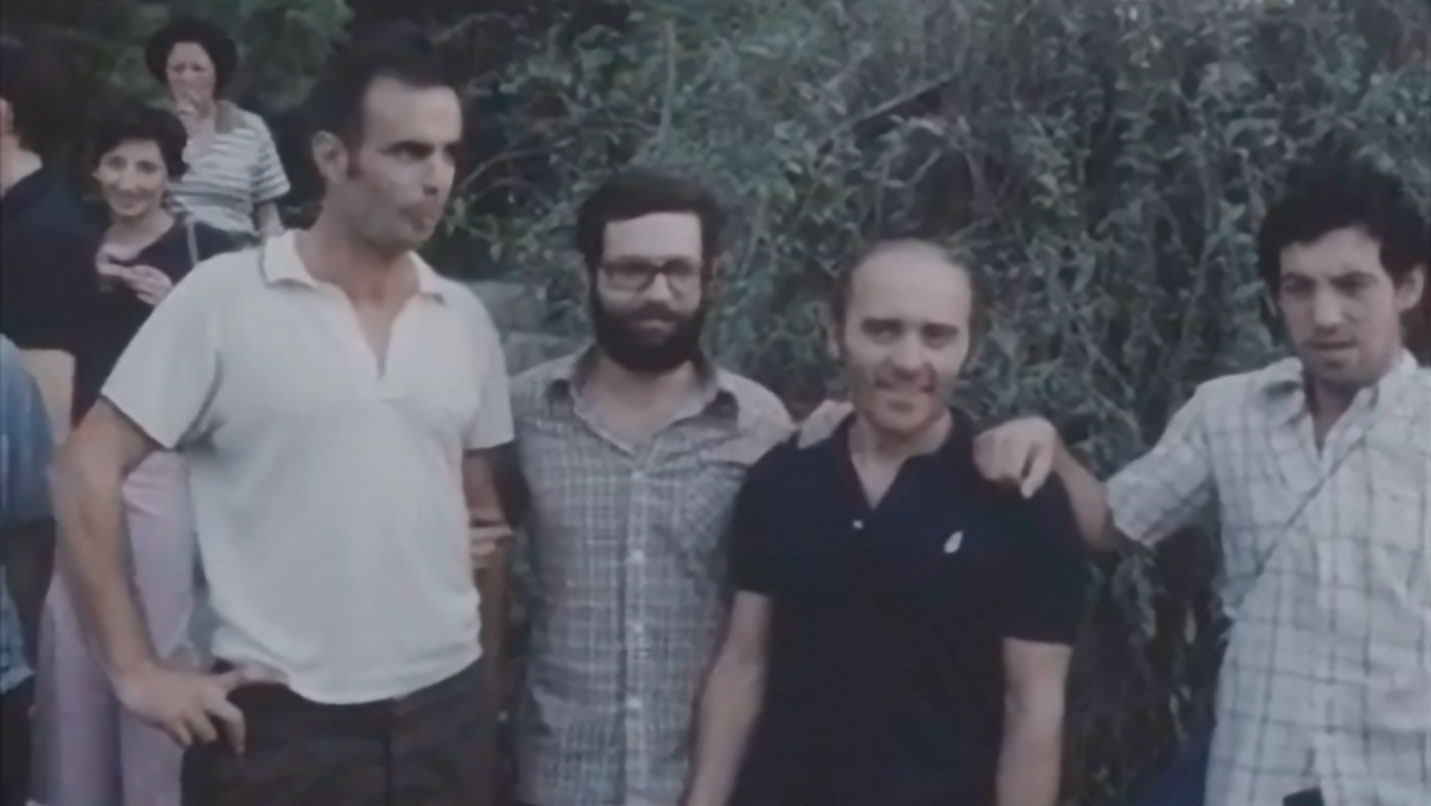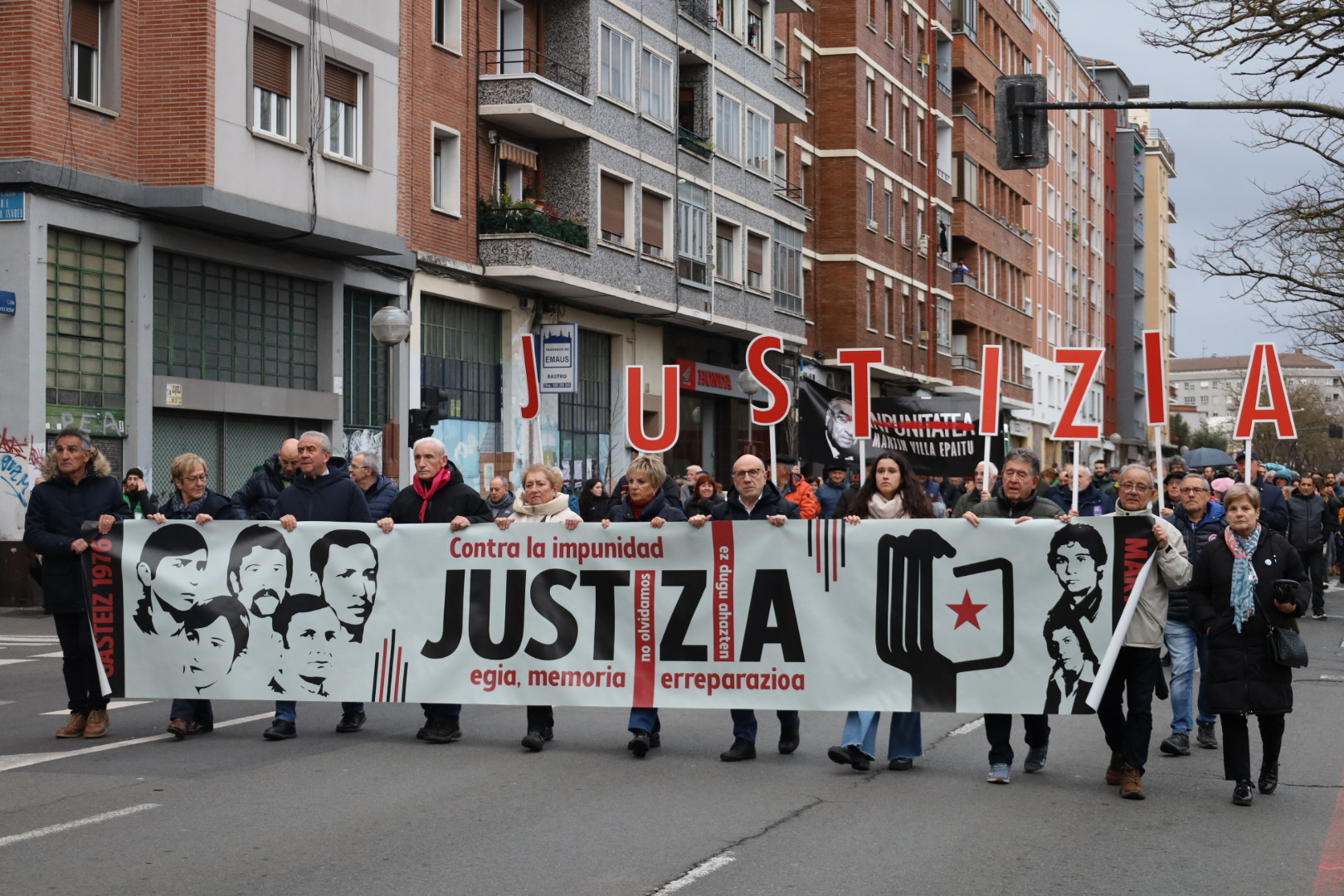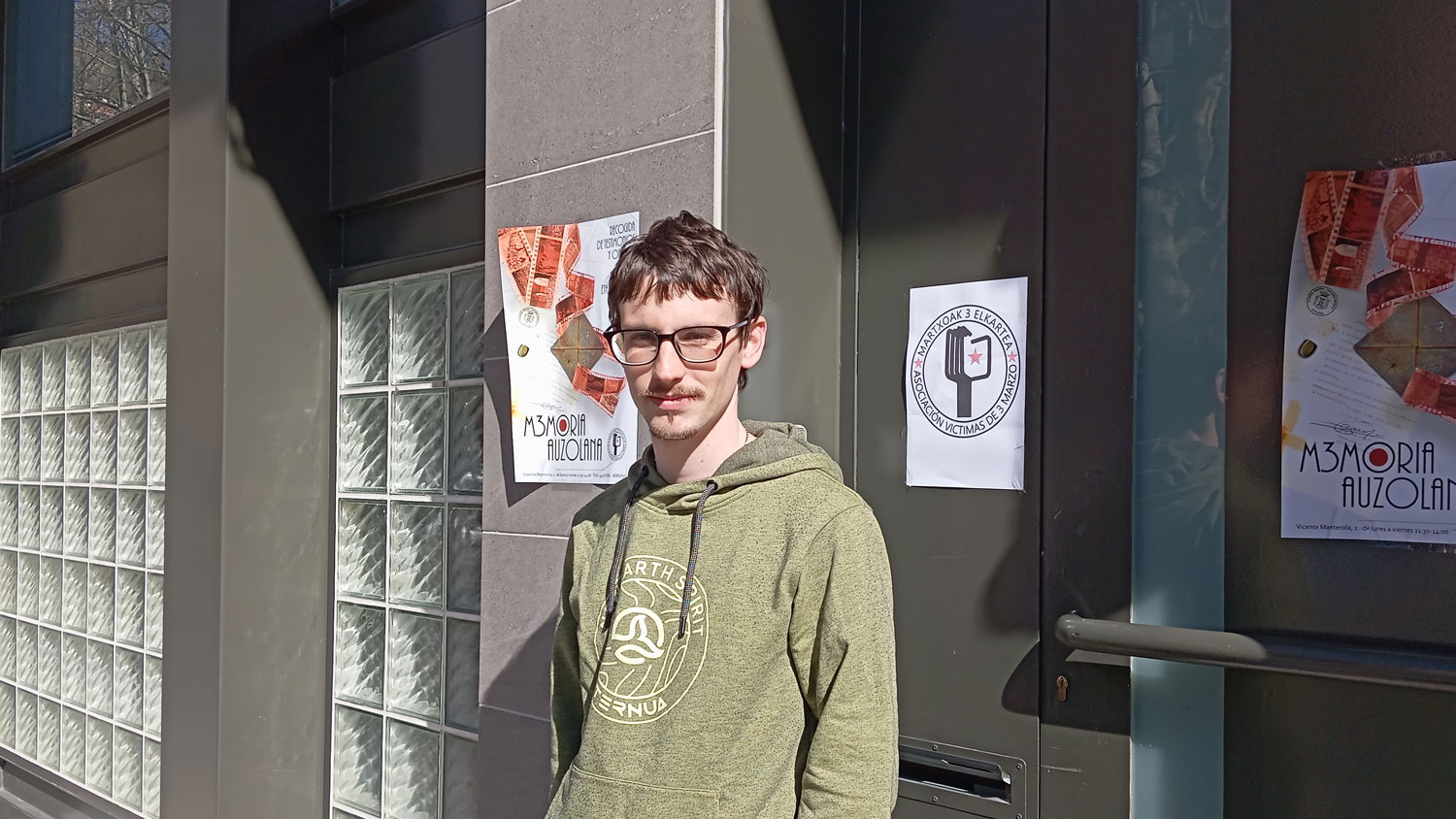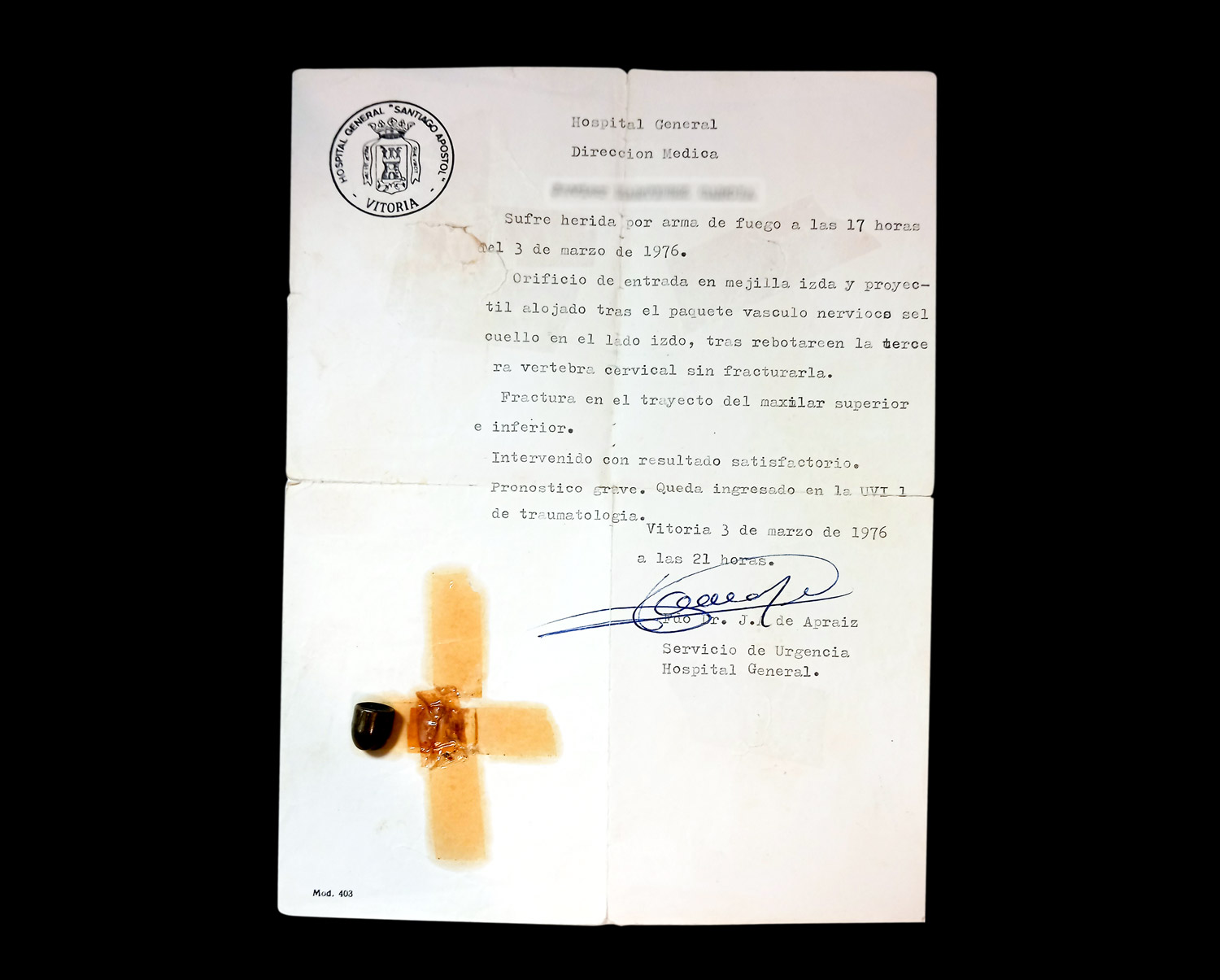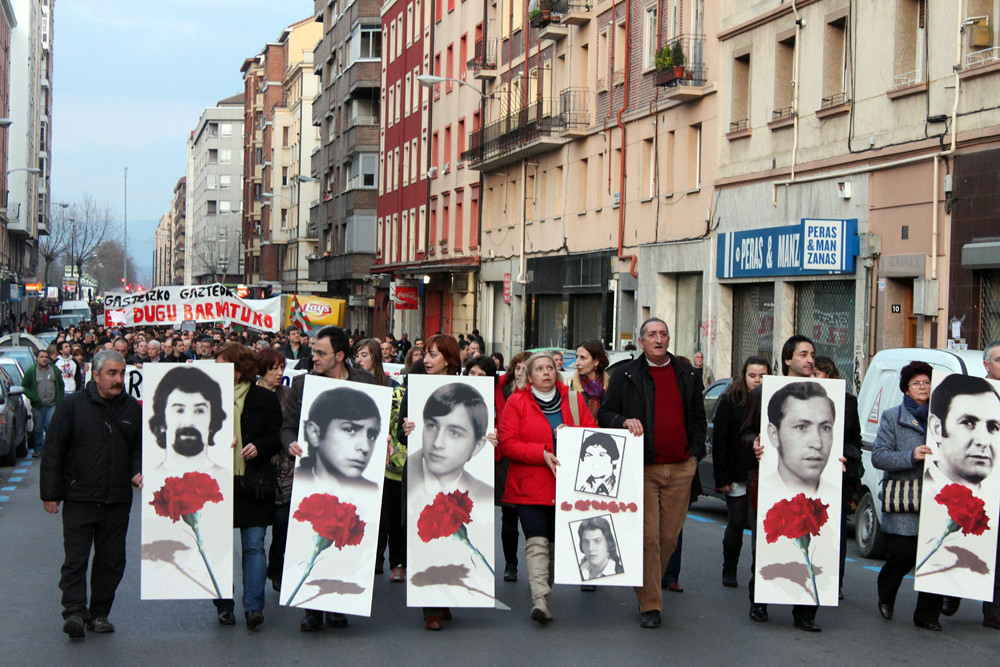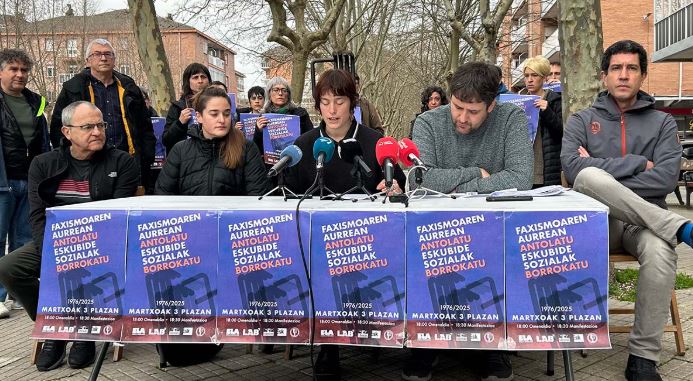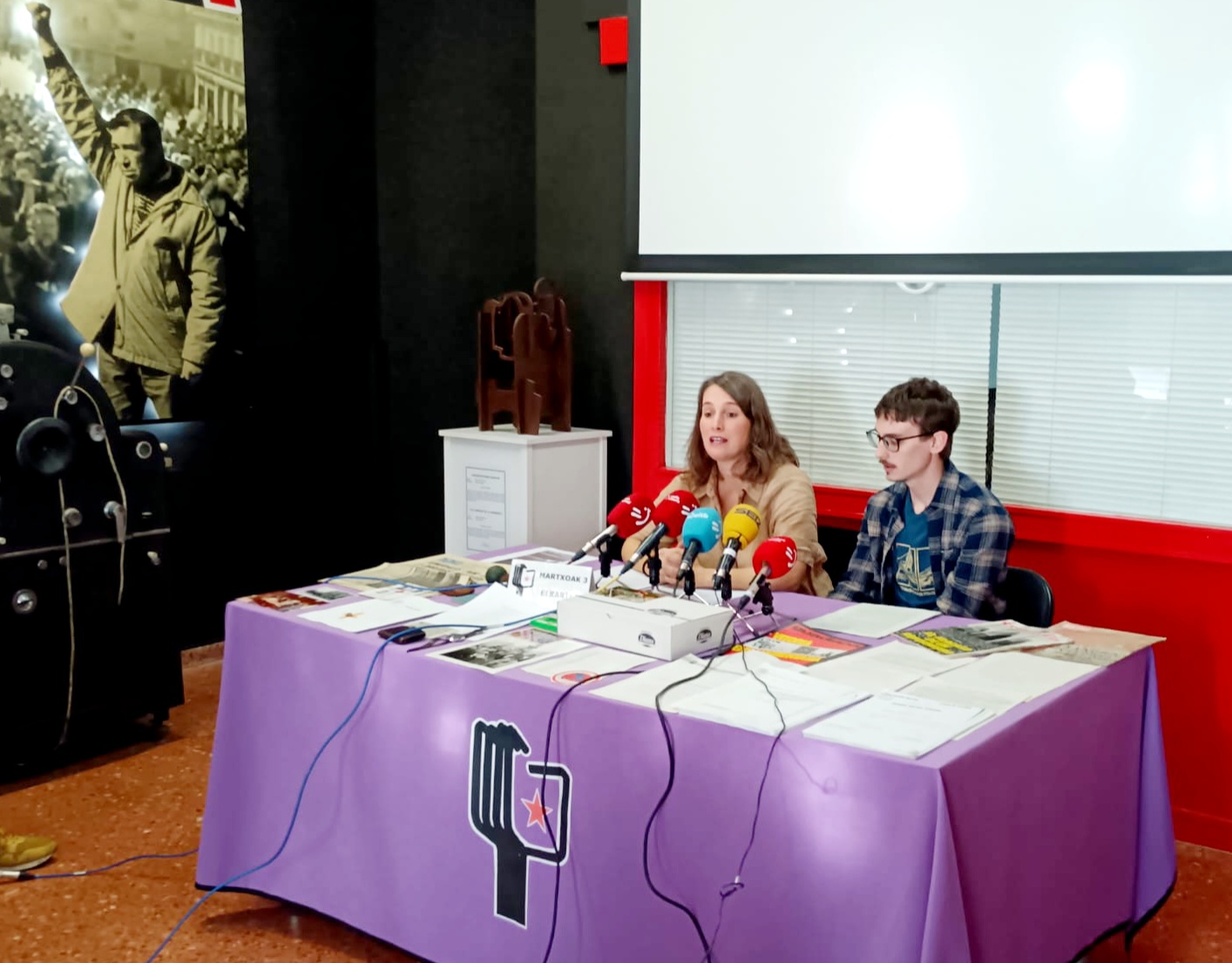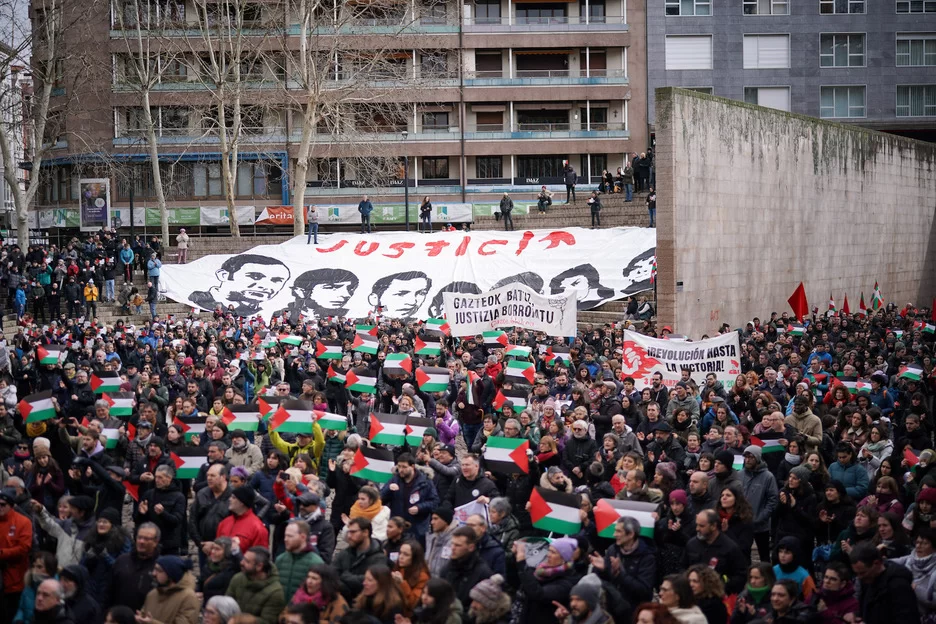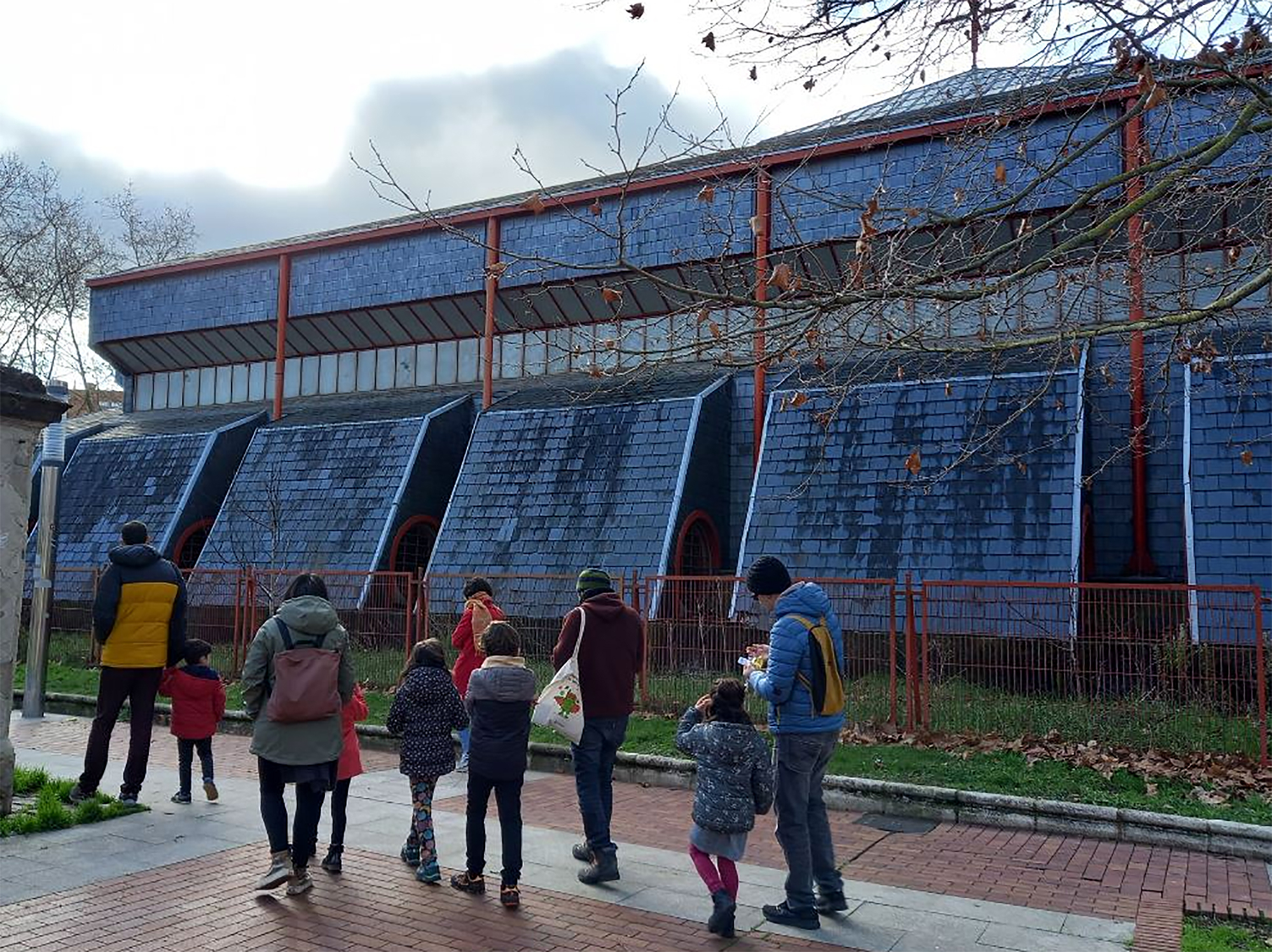"The institutions will be very wrong if they try to override the March 3 Association and the Gara Memory"
- February has been an important month for the March 3 Report of Vitoria-Gasteiz. After three years of process, on the 14th day the March-3 Association signed an agreement with the Gogoratuz Institute. One day later, the Bishop of Vitoria-Gasteiz, the City Hall of Vitoria-Gasteiz, the Provincial Council of Álava and the Basque Government made a photograph of the Memorial 3 foundation. Together with these entities will be part of the foundation's board of directors the association March 3 and the popular initiative Memoria Gara. The process is long and very complicated, the association has repeatedly denounced the institutional attitude. From now on, it does not seem easier, according to the words of Nerea Martínez Aranburuzabala, partner of the March 3 association. ARGIA spoke to Martínez about the 48th anniversary of the massacre on 3 March 1976.

You signed the convention and the foundation was finally created. Could you summarise the facts of the last three years?
In 2021, by surprise, Bishop, City Hall of Vitoria, Provincial Council of Álava and Basque Government appeared in the media announcing that the church of the 1976 massacre would become a Memory Center. It was a project promulgated well in advance by public officials, among which was the initiative Memoria Gara, which was born in 2018, and which since March 3 we joined the project. At first the institutions said it was impossible and then announced it for themselves.
With this starting point, it has been very difficult years for us. We felt very badly treated. But we have prioritized the importance of the project, knowing that the institutions cannot carry out the project if our advice, effective participation and approval are not guaranteed. We believe that the partnership agreement we have just signed can be a tool to ensure all this.
"We have to build the space of popular expressions that have kept alive the denunciation of the Vitoria massacre"
Now is the time to build our own memory. What are the deadlines? It has been said in some media that it can open its doors on 3 March 2026, for 50 years.
In the last three years representatives of the Basque Government (advisers such as Beatriz Artolazabal and Nerea Melgosa, vice-counsellor such as Rodríguez Ranz and director of the Aintzane Ezenarro Gogoan Institute) have been entangled giving that date of 2026 in the media and directing it among them. For us it is much more important than the opening date to agree a methodology and clear coordination with the partnership 3 March. Creating a common timetable would not be wrong, we have the duties we have done and we will present a plan to you. On many occasions, it seems that we live in an inverse world: institutions quickly and improvise in search of short-term headlines, while public agents demand that the process be based on a consensual working protocol.
The association and popular initiative Memoria Gara have worked hard to reflect on what the Memory Space should be, analyzing, among others, the memory spaces of other countries of the world. What is your project?
There are many projects that we have known and analyzed around the world in recent years. We have taken very interesting references from those already existing in Ireland, Portugal, Chile, Argentina, Uruguay or South Africa. The most important conclusion we have drawn is that memory must be related to current challenges. That is, we have to create a dynamic space, because our memory is alive in different struggles, because on March 3 of Vitoria-Gasteiz covers multiple problems (struggle, migration, antifaxism, feminism…).
We must not forget that, in addition to explaining the events of 1976, we must explain a popular route of almost 50 years, contrary to the Spanish model of impunity and supported by demands of different times. Our project is based on these axes, on the construction of a space of popular expressions that have kept alive the denunciation of the Vitoria massacre. Instead of looking back through memory, it should be an awareness factoring to build a better future.
"We have been rejected by some decisions, there have been many disrespect. Nevertheless, we have decided to continue the process"
You will be represented in the board of the Foundation the Bishopric of Vitoria, the Basque Government, the Provincial Council of Álava, the City of Vitoria-Gasteiz, the Association 3 of March and the Gara Memorial. It does not seem easy for all these institutions to coincide with what the association and the Gara Report want, and the trajectory of these years has not been the most appropriate to strengthen trust between the parties. But the foundation is already a reality: How do you imagine the path that will follow?
The Basque Government decided that the Report would be managed through a Foundation and in its composition imposed on us the presence of the Bishopric. We have been rejected by some decisions, there have been many disrespect. However, we have decided to continue the process. Above and beyond these institutional decisions, the Martx3 partnership is essential for the viability of the project. We are ready to provide effective advice, but the process must be based on public memory. What is not possible has been done, the last has come, and the ability to influence what has always been there has been denied. We will have to agree what and how to count, without red stripes. But for the moment it seems more important to have a common working methodology. As long as this is not done, it is very difficult to bridge the discrepancies.
"Protecting the remains of the church massacre is one of the concerns of the March 3 partnership"
How will decisions be taken in the board?
The board is represented by 16 representatives (Basque Government 3, Diputación Foral de Álava 3, City Hall of Vitoria-Gasteiz 3, Bishopric 3, Asociación 3 de Marzo 2 y Memoria Gara 2). That is, according to the current institutional situation there are 9 public positions of the PNV-PSOE and the bishopric has more representatives than the victim associations. This correlation of forces does not correspond at all to the reality that the memory of 3 March has kept alive in recent decades. With this arithmetic, most organizations have the possibility to impose the management model, design and contents. But they would be very wrong if they tried to roll over Association March 3 and Gara Memory, because without us the project is not viable.

We have known through the media that, according to a report commissioned by the Gogoratuz Institute, the church presents serious structural problems that can lead to the “collapse” of the building. Repairs have been measured at 1.2 million. Can it jeopardise the project or its deadlines?
Gogorak requested this report in 2021, we were informed at the time. However, since then no intervention has been made to resolve these structural issues, even though Gogorak had a budget line of EUR 250,000 to spend on the project, both in 2022 and in 2023. Last year, EH Bildu received more funding in Madrid, EUR 600,000, but the Basque Government has not used that money. Structural problems need to be solved, but one of the concerns of the March3 partnership is to protect the remains of the massacre in the church. The bullet marks on the slate roof surrounding the building, as well as those on the stained glass windows, must be catalogued, protected and maintained as proof of state crime. In the remodeling of the church, there are signs to consider.
In addition to the topographic study that identifies and monitors these brands, it is important to perform an archaeological intervention in the trench existing in 1976. The trench surrounded the building and had a depth of half a meter. In that space that was then covered, it is possible that the day of the crime would be buried crystals, bullet covers and all kinds of objects. It is much more important for there to be planning that gathers our input.
"Our best tribute is to continue fighting today and here for social justice"
March 3 is back at the door, this year will be the 48th anniversary. What ideas or demands will the association have this year?
This year our partnership turns 25. In 1999 we organised ourselves to demand truth, justice, reparation and guarantees of non-repetition. This does not mean that the denunciation of the massacre began with us. Since the first day the Vitorian people have denounced the state crime of 3 March 1976. Over and above all the repression, criminalisation, official neglect and difficulties, this year we want to pay tribute to those who have always been there in recent decades. Moreover, the association will join the call of the unions ELA, LAB, ESK and Steilas. Because for us to remember is to join the struggles of today's workers. Because, as we always say, our best tribute is to keep fighting today and here for social justice.
Hiru bideo dira (albiste barruan ikusgai). Batak jasotzen du, grebak antolatzea leporatuta, Carabanchelen espetxeratu zituzten Jesús Fernandez Naves, Imanol Olabarria eta Juanjo San Sebastián langileak espetxetik atera ziren unea, 1976ko abuztuan. Beste biak Martxoak... [+]
49 urte eta gero Espainiako Poliziak Gasteizko Maria Sortzez Garbiaren katedralean eraildako bost langileak oroitu dituzte beste behin astelehen arratsaldean. Milaka pertsona batu dira Zaramagatik abiatutako eta katedralean amaitutako manifestazioan. Manifestari guztiek ez dute... [+]
Martxoak 3ko sarraskiaren 49. urteurrena beteko da astelehenean. Grebetan eta asanblada irekietan oinarritutako hilabetetako borroka gero eta eraginkorragoa zenez, odoletan itotzea erabaki zuten garaiko botereek, Trantsizioaren hastapenetan. Martxoak 3 elkartea orduan... [+]
1976ko martxoaren 3an, Gasteizen, Poliziak ehunka tiro egin zituen asanbladan bildutako jendetzaren aurka, zabalduz eta erradikalizatuz zihoan greba mugimendua odoletan ito nahian. Bost langile hil zituzten, baina “egun hartan hildakoak gehiago ez izatea ia miraria... [+]
Martxoaren 3ko Memoriala hornitzeko erabiliko dira bildutako objektuak. Ekimena ahalik eta jende gehienarengana iristeko asmoz, jardunaldiak antolatuko ditu Martxoak 3 elkarteak Gasteizko auzoetan.








